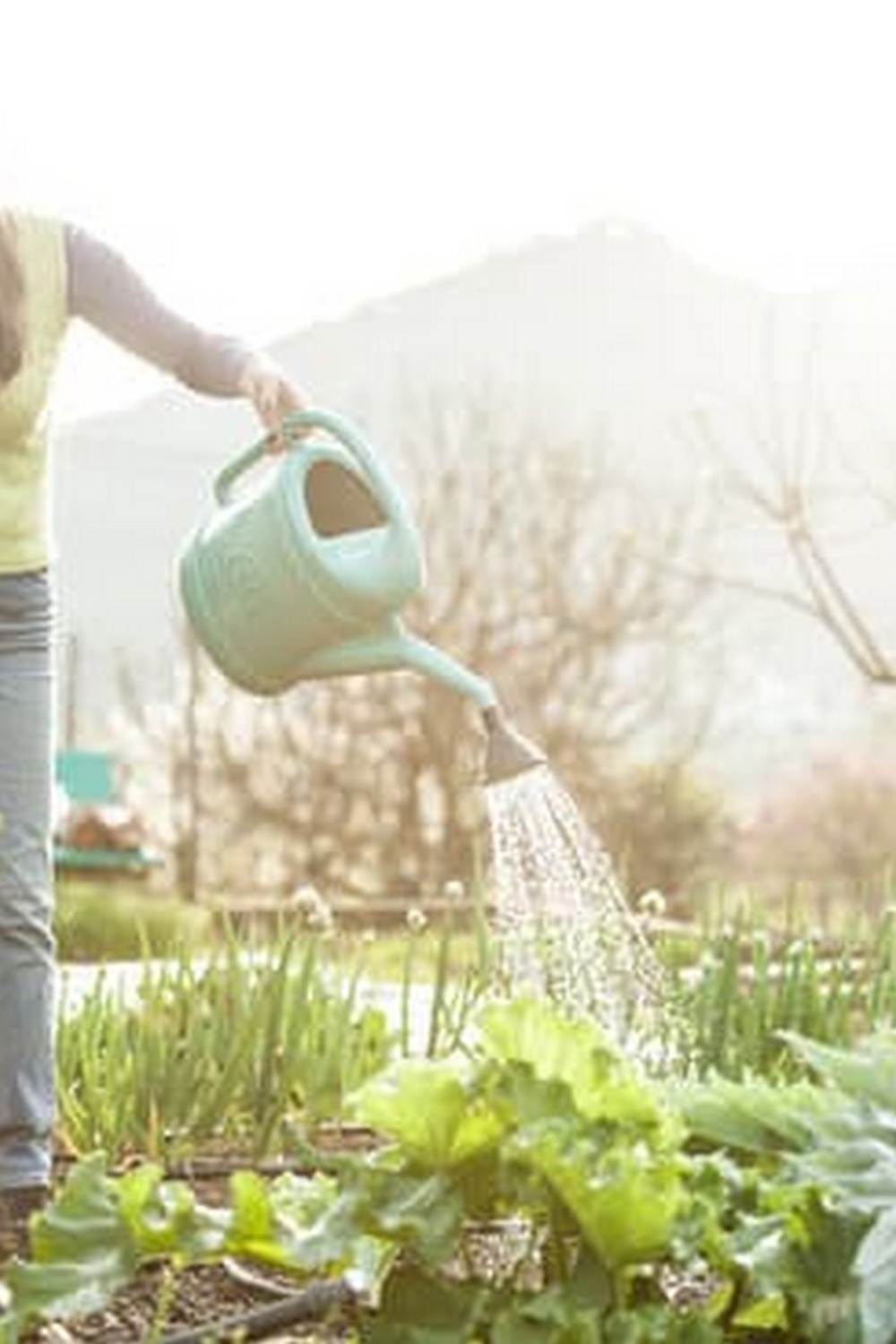Companion flowers play a crucial role in vegetable gardens, acting as not only colorful additions to the landscape but also as beneficial partners to the vegetables they share the soil with. These companion flowers, carefully selected for their ability to attract pollinators, deter pests, and enhance soil health, can significantly improve the growth and overall health of your vegetable plants.
When choosing the right companion flowers for your garden, various factors such as compatibility with specific vegetables, sunlight requirements, and blooming schedules should be taken into consideration.
By strategically incorporating companion flowers into your vegetable garden, you can create a harmonious ecosystem that encourages biodiversity and supports a thriving environment for your plants. The benefits of using companion flowers extend beyond aesthetics, with many flowers providing natural pest control by attracting beneficial insects or repelling harmful pests. Additionally, certain companion flowers can help improve soil health by fixing nitrogen or providing ground cover to prevent erosion and retain moisture.
Whether you are looking to enhance the growth of your tomatoes, herbs, or other vegetables, there are specific companion flowers that can complement and support each type of plant in your garden. From marigolds that deter nematodes from attacking tomato roots to calendula flowers that attract hoverflies for herb pollination, the possibilities for pairing vegetables with companion flowers are endless.
By understanding the symbiotic relationships between plants and selecting the appropriate flowers for your garden’s unique needs, you can create a beautiful and productive space that thrives with diversity and abundance.
Benefits of Companion Flowers
Companion flowers play a crucial role in enhancing the growth and health of vegetables in your garden. By strategically planting certain flowers alongside your vegetable plants, you can create a harmonious ecosystem that promotes biodiversity and supports pollination. These companion flowers attract beneficial insects, such as bees and butterflies, which help pollinate vegetable crops, leading to better yields.
One of the key benefits of companion flowers for vegetable gardens is their ability to attract pollinators. Bees are essential for the pollination of many vegetable plants, including tomatoes, cucumbers, and peppers. By incorporating flowers that are attractive to bees, such as lavender, sunflowers, and zinnias, you can increase the pollination rate in your garden and ultimately improve the quality and quantity of your harvest.
Furthermore, companion flowers can also help improve soil health by attracting beneficial microbes that contribute to a healthy soil ecosystem. Certain flowers have deep roots that help break up compacted soil and improve drainage, while others release compounds into the soil that act as natural fertilizers. This symbiotic relationship between companion flowers and vegetables creates a thriving environment where plants can flourish.
| Benefit | Example |
|---|---|
| Increased pollination | Lavender attracting bees for tomato pollination |
| Improved soil health | Marigolds releasing compounds for natural fertilization |
Choosing the Right Companion Flowers
When selecting companion flowers for your vegetable garden, it is essential to consider various factors to ensure a successful and harmonious relationship between the flowers and your crops. One crucial factor to consider is the compatibility of the companion flowers with the specific vegetables you are growing. Different flowers have varying requirements for sunlight, soil pH, and water levels, so it is important to choose companion flowers that have similar needs to your vegetables.
Another important factor to keep in mind when selecting companion flowers is their growth habits. Some flowers may be too aggressive and compete with your vegetable plants for space, water, and nutrients. It is best to choose companion flowers that have a similar growth rate or can be easily managed to prevent them from overpowering your vegetables. Additionally, consider the height of the companion flowers as taller plants may shade your vegetables if not placed strategically in your garden.
Furthermore, when choosing companion flowers for your vegetable garden, think about the aesthetic appeal they will bring. Select flowers that complement the colors and textures of your vegetable plants to create an attractive and visually pleasing garden bed.
Not only will this enhance the overall appearance of your garden, but it can also attract beneficial insects that help with pollination and pest control. By carefully considering these factors, you can create a beautiful and thriving vegetable garden with well-chosen companion flowers.
Best Companion Flowers for Tomatoes
Tomatoes are a staple in many vegetable gardens, prized for their versatility and delicious flavor. When it comes to planting tomatoes, choosing the right companion flowers can make a significant difference in the health and productivity of your tomato plants.
Not only do companion flowers add beauty to your garden, but they also play a critical role in attracting pollinators, repelling pests, and improving soil quality. By selecting the best companion flowers for tomatoes, you can create a harmonious and thriving garden ecosystem.
When selecting companion flowers for your tomato plants, consider factors such as growth habits, sunlight and water requirements, and compatibility with tomatoes. Some flowers may compete with tomatoes for nutrients or space, so it’s essential to choose companions that will benefit rather than hinder your tomato plants. Additionally, certain companion flowers have natural pest-repelling properties that can help protect your tomato plants from common garden pests.
To help you get started, here are some of the best companion flowers for tomatoes:
- Marigolds: These vibrant annual flowers not only add color to your garden but also help repel nematodes and other harmful insects that can damage tomato plants.
- Nasturtiums: With their edible leaves and flowers, nasturtiums not only attract beneficial insects but also deter aphids, cucumber beetles, and other pests that commonly plague tomato plants.
- Basil: This fragrant herb is not only a popular culinary companion for tomatoes but also helps improve the flavor of both crops when grown together. Basil also acts as a natural insect repellent.
By incorporating these companion flowers into your vegetable garden alongside your tomato plants, you can create a beautiful and productive growing environment. Experiment with different combinations to find the perfect companions for your tomatoes while enjoying the benefits of a diverse and biodiverse garden ecosystem.
Companion Flowers for Herbs
Companion flowers can play a crucial role in enhancing the growth and health of herbs in your vegetable garden. By carefully selecting the right flowers to grow alongside your herbs, you can create a harmonious ecosystem that promotes biodiversity and supports beneficial insects. One of the key benefits of companion flowers for herbs is their ability to attract pollinators such as bees and butterflies, which can help increase herb yields through improved pollination.
When choosing companion flowers for your herbs, it is essential to consider factors such as sunlight requirements, soil preferences, and water needs. For example, some herbs prefer well-drained soil with full sunlight, while others thrive in partial shade. Selecting companion flowers that have similar growing conditions to your herbs will help ensure that both plants flourish together in your vegetable garden. Additionally, choosing flowers with complementary colors and scents can create a visually appealing and aromatic garden space.
Some excellent companion flowers for herbs include marigolds, chamomile, and nasturtiums. Marigolds are known for their vibrant blooms and strong scent, which can help repel pests such as aphids and nematodes that may harm your herb plants. Chamomile not only attracts beneficial insects but also has natural antibacterial properties that can benefit nearby herbs.
Nasturtiums are edible flowers that add color to your garden while also deterring pests like whiteflies and cucumber beetles. By incorporating these companion flowers into your herb garden, you can create a beautiful and functional space that supports the growth of both plants harmoniously.
| Companion Flower | Main Benefit |
|---|---|
| Marigolds | Repels pests like aphids and nematodes |
| Chamomile | Attracts beneficial insects and has antibacterial properties |
| Nasturtiums | Adds color to the garden and deters pests like whiteflies |
Companion Flowers for Pest Control
When it comes to maintaining a healthy and thriving vegetable garden, dealing with pests and insects can be a significant challenge. However, incorporating companion flowers that help repel these unwanted visitors can be a natural and effective way to protect your plants. These companion flowers not only add beauty to your garden but also serve as a natural pest control method, reducing the need for harmful pesticides.
Marigolds: Nature’s Pest Repellent
One of the most popular companion flowers known for its pest-repelling properties is marigolds. With their vibrant colors and strong scent, marigolds act as a natural deterrent for nematodes, aphids, and other common garden pests. Placing marigolds strategically throughout your vegetable garden can help protect your crops from damage while adding a pop of color to the landscape.
Lavender: Aromatic Pest Control
Lavender is another excellent companion flower that not only adds fragrance to your garden but also helps repel pests such as fleas, moths, and mosquitoes. Planting lavender near your vegetables can attract beneficial pollinators like bees and butterflies while deterring harmful insects. Additionally, drying lavender flowers to create sachets can be a natural way to protect stored vegetables from pests indoors.
Nasturtiums: Edible Flowers With Pest-Repelling Properties
Nasturtiums are not only visually appealing with their bright blooms but also serve as an edible flower that can enhance salads or garnish dishes. These versatile flowers are known for their ability to repel pests like aphids, whiteflies, and squash bugs. By planting nasturtiums alongside your vegetables, you can create a beautiful and functional garden space that promotes plant health while keeping damaging insects at bay.
Seasonal Companion Flowers
When planning your vegetable garden, it’s important to consider the changing seasons and how they can affect plant growth. By incorporating seasonal companion flowers into your garden, you can not only enhance the beauty of your space but also provide support for your vegetables throughout the year.
During the spring, consider planting marigolds as companion flowers for your vegetables. Marigolds are known for their ability to deter pests such as nematodes and aphids while attracting beneficial insects like ladybugs. Their vibrant blooms will add a pop of color to your garden while serving a practical purpose in protecting your vegetable plants.
As the temperatures rise in the summer months, sunflowers make excellent companion flowers for vegetable gardens. Sunflowers are not only visually stunning but also attract pollinators such as bees and butterflies, helping to ensure a bountiful harvest of fruits and vegetables. Their tall stature can also provide shade and support for climbing plants like cucumbers or pole beans. Consider planting them along the edges of your garden beds or interspersed among your vegetables for a striking visual impact.
In the fall, pansies are a great choice for companion flowers in vegetable gardens. Pansies come in a wide range of colors and can tolerate cooler temperatures, making them ideal for brightening up your garden as summer transitions to autumn.
These flowers also help improve soil health by acting as ground cover, protecting the soil from erosion and adding organic matter as they decompose. By carefully selecting seasonal companion flowers for your vegetable garden, you can create a harmonious and productive growing space throughout the year.
Design Tips for Incorporating Companion Flowers Into Your Vegetable Garden
In conclusion, incorporating companion flowers into your vegetable garden can bring a multitude of benefits and enhance the overall health and growth of your plants. By carefully selecting the right flowers that complement your vegetables, you can create a symbiotic relationship that encourages pollination, deters pests, and improves the aesthetic appeal of your garden. Whether you are planting tomatoes, herbs, or other vegetables, there are specific companion flowers that can help optimize their growth and yield.
When choosing companion flowers for your vegetable garden, it is essential to consider factors such as sunlight requirements, soil preferences, and blooming periods to ensure compatibility with your existing plants. By strategically combining different types of flowers among your vegetables, you can create a visually appealing and functional garden space that attracts beneficial insects and wildlife while deterring harmful pests.
Overall, by incorporating companion flowers into your vegetable garden design, you not only promote biodiversity and ecological balance but also create a harmonious and vibrant outdoor space. Experimenting with various companion flower combinations throughout different seasons can lead to a more resilient and productive garden that delights both the eyes and the taste buds.
So go ahead and explore the world of companion flowers for vegetable gardens to reap the numerous benefits they offer in enhancing the beauty and productivity of your green space.
Frequently Asked Questions
What Flowers Grow Well With Vegetables?
Some flowers that grow well with vegetables include marigolds, nasturtiums, and zinnias. Marigolds can help repel pests, nasturtiums attract beneficial insects, and zinnias add beauty while attracting pollinators.
What Are the Best Pollinator Flowers for Vegetable Gardens?
The best pollinator flowers for vegetable gardens include bee balm, lavender, and sunflowers. These flowers attract bees, butterflies, and other beneficial insects that help with pollination in the garden.
What Should You Not Plant Next to Each Other in a Vegetable Garden?
There are certain plants that should not be planted next to each other in a vegetable garden due to potential negative interactions. For example, planting tomatoes near cucumbers can lead to disease spread between the two plants. It’s important to research companion planting guidelines to avoid these issues in your garden.

If you’re looking to get into vegetable gardening, or are just looking for some tips on how to make your current garden better, then you’ve come to the right place! My name is Ethel and I have been gardening for years. In this blog, I’m going to share with you some of my best tips on how to create a successful vegetable garden.





